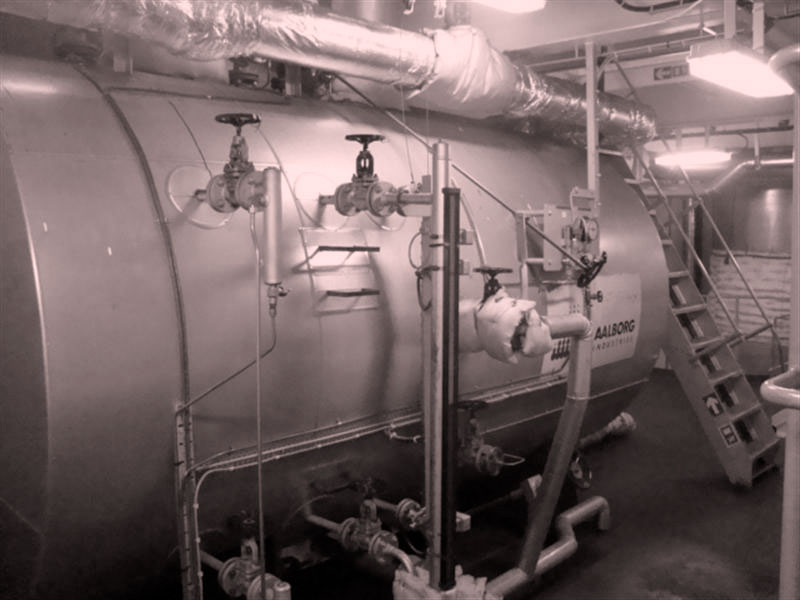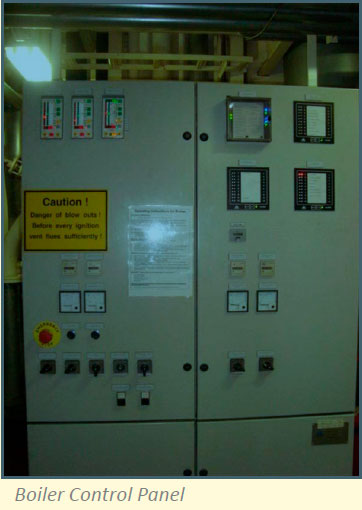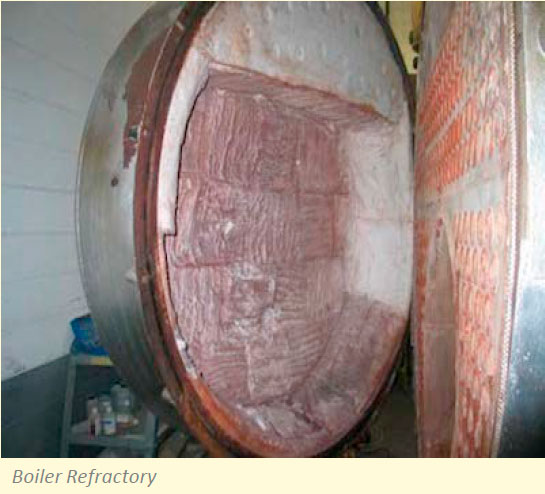Boiler is one of the most important systems in the ship’s engine room. A boiler is a system, which though not required continuously for operating a ship, requires importance equivalent to other equipment during operation and maintenance. As the boiler generates steam at extremely high pressure and temperature, proper care should be taken while handling the same.
Here’s a step-by-step procedure for starting and stopping a boiler on a ship.
STARTING

It is to note that the following steps may not apply to all types of boilers.
Moreover, different types of boilers might require additional steps to be followed as per the system design, but the basic steps remain the same.

- Ensure that the vent valve on the boiler is open and check there is no pressure in the boiler
- Check that the steam stop valve is closed
- Check if all the valves for fuel are open, and let the fuel circulate through the system until it comes to the temperature required by the manufacturer’s recommendation
- Check and open the feed water valves to the boiler and fill the water inside the boiler drum till just above the low water level. This is done because it is not possible to start the boiler below the low water level as the safety feature would prevent it from starting. Also, if the water level is high, the boiler water might expand and over-pressurize the boiler
- Start the boiler in automatic mode. The burner fan will start the purging cycle which will remove gases present in the furnace by forcing it out through the funnel
- After the pre-set purge time, the pilot burner will ignite. The pilot burner consists of two electrodes, through which a large current is passed via the transformer
- This produces a spark between the electrodes. The pilot burner is supplied with diesel oil, which then ignites the burner
- The main burner, which is supplied with heavy oil, then catches fire with the help of the pilot burner
- Check the combustion chamber from the sight glass to ensure that the burner has lit and the flame produced is satisfactory
- Keep a close eye on the water level when the pressure increases
- Open the feed water when the level of water inside the gauge glass is stable
- Close the vent valve after the steam starts coming out
- Open the steam stop valve
- Once the working steam pressure is reached, blow down the gauge glass and float chambers to check for the alarms
“During the starting up of the boiler, the lightening up period must be further reduced as the refractory may contain some amount of water, which may expand and lead to fissure if wrongly operated.”
STOPPING
- If the boiler is needed to be stopped for longer duration for maintenance purpose or is required to be opened up for survey, change the fuel to distillate fuel
- If separate heating arrangement for heavy oil is present then there is no need to change over to distillate fuel. The oil should be kept on circulation mode
- Stop the boiler automatic cycle
- Close the steam stop valves
- Close the boiler feed water valves
- When the boiler pressure is reduced to just over atmospheric pressure, the vent valve is kept open to prevent vacuum formation inside the boiler
“During stopping, sudden pressure and temperature drop must be avoided as it might expose the mountings and piping to inadmissible pressure gradient.”
Procedure for staring boiler with diesel oil and changeover to fuel oil for normal operation:
- Start the boiler diesel oil ignition pump and fuel oil booster pump taking suction from diesel oil service tank with HFO line valve shut
- Flash up the boiler using MDO and atomizing air
- Once the steam starts generating, open the supply of steam to HFO service tank for heating
- Open the tracing steam to fuel oil line from service tank to boiler burner
- When sufficient steam is generated, stop firing the boiler
- Open the fuel oil heater steam inlet and outlet valves, close heater bypass valve
- Open the boiler fuel oil pump HFO suction in the three way valve simultaneously closing the MDO valve
- Raise the HFO temperature manually and start firing the boiler in HFO with atomizing air. Once the boiler is in heavy oil, start steam atomization and shut its airinlet
Preparing Boiler Feed Water System:
Following points to be considered when initially preparing the feed water system:
- Open the suction valve of the feed pump
- Keep the discharge valve of the feed pump shut
- Start the feed pump and slowly open the discharge valve until the discharge line reaches working pressure
- Ensure feed check valve is operating fine
- Fill the boiler to its working gauge glass level
- Put rest of the pump to stand-by

Stopping the boiler for repair or inspection:
- Soot blow the boiler during operation
- Operate the burner for at least 20 min to remove the remaining water after soot blow
- Stop the boiler as discussed in normal stopping procedure
- Once the boiler is de-pressurized, drain the water from the boiler
- Open all the boiler manholes and doors including the mud space
- Clean the boiler and check for lime stone deposits
- When boilers are taken out of service for any length of time, corrosion may occur on the internal surfaces of the boiler unless certain precautions are observed. Silica gel should beplaced in the boiler immediately after the drying-out process
References
The Ultimate Guide to Operating Procedures of Engine Room Machinery. Anish Wankhede [2014]

